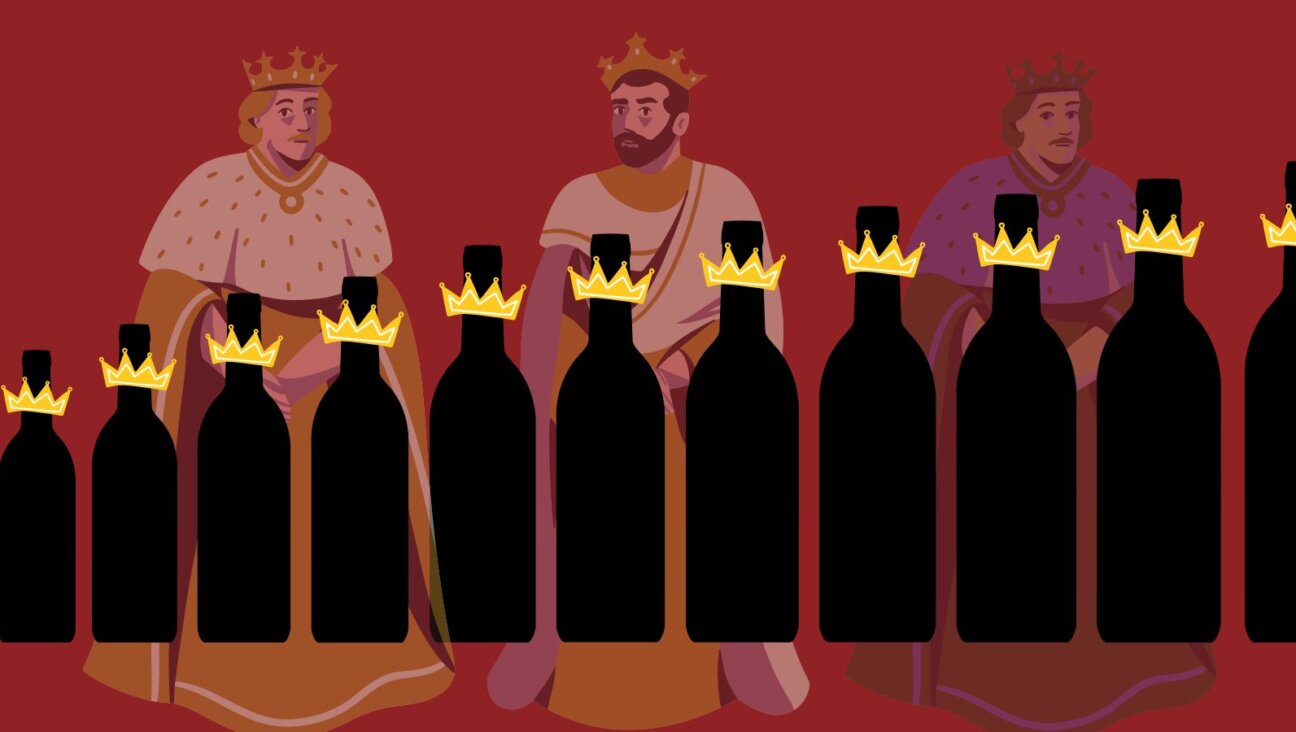For National Coffee Day, the Secret Jewish History of the coffee cup

Four of Cups: The creator of the ?Anthora? cup was Leslie Buck who was a survivor of Auschwitz and Buchenwald. Image by Wikimedia Commons
Editor’s Note: For National Coffee Day, September 29, 2020, we bring you the compelling history, originally published in 2014, of those familiar vessels that store our liquid energy.
In the Talmud (Eruvin 65b), Rabbi Ilai cleverly opines: “A person is recognized by three things: their cup, their pocket, and their anger.” In other words, how they handle their liquor (self control), their money (generosity), and their temper (patience). It’s a lot more poetic in the Hebrew, where the three characteristics are, “koso, kiso, and ka’aso.”
A more alliterative English translation might be, “pour, pocket, and pique.” Entire sermons and morality tales can be woven from this dictum, but with National Coffee Day upon us, I wanted to shed a little light on some unusual Jewish connections to item #1 from this aphorism: The Cup.
One place where I often see people’s cups, pockets and anger-management skills come into play is standing on line at Starbucks. But no matter how you navigate your order — with impatience, queries about fair trade beans or a perhaps too generous tip from your pocket — when you exit Starbucks you’ll be carrying a cup whose iconic design is largely Jewish in origin.
One of the 1971 founders of the original Starbucks, Zev Siegel, was Jewish, and in 1987 the company was bought by fellow Jew, former employee and onetime 2020 presidential hopeful Howard Schultz, who was passionately committed to turning Starbucks from a whole-bean coffee roaster and retailer into a chain of espresso bars that served as communal gathering places like those he encountered on buying trips to Milan as Starbucks’ former director of marketing.
The new Starbucks logo was a merger of the original Starbucks logo and the logo for Il Giornale – Schultz’s espresso bar that he opened when he couldn’t convince the original Starbucks owners to focus on brewed coffee sales. Schultz’s new Starbucks logo (a form of which is still in use today) featured a stylized version of the original Starbucks two-tailed mermaid (technically a Melusine), changed from brown to green to match the green circle with white block lettering and stars that was part of Schultz’s original logo for Il Giornale. For many coffee drinkers, a quick sighting of the Starbucks green alone (Pantone 3298) is enough to elicit Pavlovian caffeine cravings that are not easily denied.
The Starbucks cup may be iconic (if not ubiquitous), but there’s one other coffee cup that has it beat in terms of recognizability and Jewish connections.
50 years ago, in an attempt to sell more paper cups to the plethora of Greek-owned diners in New York City, the marketing director for the startup Sherri Cup Company created the “Anthora” coffee cup. The cup’s creator, Leslie Buck, was born Laszlo Büch to a Ukranian Jewish family. Both his parents were killed by the Nazis, and Leslie himself was a survivor of both Auschwitz and Buchenwald.
Featuring the blue and white of the Greek flag, with a classic key pattern, a drawing of an amphora (the Greek vase for which the cup, courtesy of Buck’s thick accent, is named), The New York Times called this cup, “a pop-cultural totem” that was “as vivid an emblem of New York City as the Statue of Liberty.” For many New Yorkers, this simple cup can evoke Proustian memories of streets traveled, early work mornings, and Sunday dog walks. For Buck, it was a long journey from “Work Makes You Free” to “We Are Happy to Serve You.”
Each Passover at our seder, we lift each cup of wine in remembrance of our journey from slavery to freedom. But it is not freedom from work we desire – it is the freedom to approach each (caffeine-fueled) day with the discipline, generosity and patience necessary to immerse ourselves in work that really matters – to our lives, our communities, and our world.
As Marge Piercy wrote, in her poem, “To Be of Use”:
I want to be with people who submerge
in the task, who go into the fields to harvest
and work in a row and pass the bags along…
…The work of the world is common as mud.
Botched, it smears the hands, crumbles to dust.
But the thing worth doing well done
has a shape that satisfies, clean and evident.
Greek amphoras for wine or oil,
Hopi vases that held corn, are put in museums
but you know they were made to be used.
The pitcher cries for water to carry
and a person for work that is real.
Eric Schulmiller is the Cantor of the Reconstructionist Synagogue of the North Shore, and has written humor and culture pieces for the New York Times, The New Yorker, and The Atlantic.

I hope you appreciated this article. Before you go, I’d like to ask you to please support the Forward’s award-winning journalism this Passover.
In this age of misinformation, our work is needed like never before. We report on the news that matters most to American Jews, driven by truth, not ideology.
At a time when newsrooms are closing or cutting back, the Forward has removed its paywall. That means for the first time in our 126-year history, Forward journalism is free to everyone, everywhere. With an ongoing war, rising antisemitism, and a flood of disinformation that may affect the upcoming election, we believe that free and open access to Jewish journalism is imperative.
Readers like you make it all possible. Right now, we’re in the middle of our Passover Pledge Drive and we need 500 people to step up and make a gift to sustain our trustworthy, independent journalism.
Make a gift of any size and become a Forward member today. You’ll support our mission to tell the American Jewish story fully and fairly.
— Rachel Fishman Feddersen, Publisher and CEO
Join our mission to tell the Jewish story fully and fairly.
Our Goal: 500 gifts during our Passover Pledge Drive!























